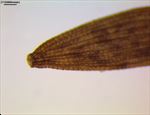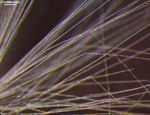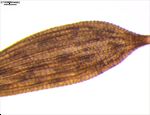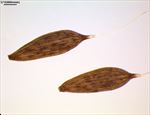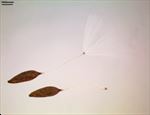Taxonomy
Lactuca saligna L., Sp. Pl.. 1753
Common synonyms
Chondrilla crepoides Lapeyr.; Lactuca adulteriana Gren. & Godr.; Lactuca adulterina Gren. & Godr.; Lactuca angustifolia Gilib.; Lactuca caucasica K.Koch; Lactuca caucasica var. caucasica; Lactuca caucasica var. major K.Koch; Lactuca caucasica var. minor K.Koch; Lactuca cyanea K.Koch; Lactuca salicifolia Salisb.; Lactuca saligna f. saligna; Lactuca saligna var. runcinata Gren. & Godr.; Lactuca saligna var. ruppiana Wallr.; Lactuca saligna var. saligna; Lactuca saligna var. wallrothiana Wallr.; Lactuca spiciformis Dulac; Lactuca tommasiniana Sch.Bip.; Lactuca vanensis Azn.; Lactuca viminea var. cracoviensis Rouy; Lactuca virgata Tausch; Lactuca wallrothii Spreng.
Common name
Least lettuce
Description
Propagule or dispersal unit is the fruit with pappus. Fertile part 2.5-4 mm long, 0.6-1 mm wide, in side view widest in upper part (obovoid) or widest in the middle, +/- straight, the upper (apical) end narrowing, in cross-section flattened, basal scar (carpopodium) pronounced and well-differentiated or inconspicuous and undifferentiated, central, beak (=thinner sterile stalk between seed and pappus) present, beak length 4-6.5 mm, wings absent, fruit surface light brown or straw or dark brown, smooth (except at cellular level), with no hairs (glabrous), thickened margin absent, longitudinal ribs present, 15-20, their surfaces toothed, serrated or scale-like, with no hairs (glabrous).
Pappus type bristles / hairs, pappus elements all +/- similar, up to 3.5-5.5 mm long, in several rows, pappus elements numerous, falling off as a whole or elements falling off individually, the individual bristles rough / serrated (barbellate), +/- equal width along length, white / translucent.
Notes: The beak breaks easily, so that the pappus will presumably often be missing when this species is encountered. The three species of Lactuca covered in this key have very similar fruits, but L. sativa generally has larger fruits than L. saligna and L. serriola (1-2 mm wide versus up to 1.1 mm wide).
Ecology
Annual herb, seeds wind-dispersed. Temperate regions. Found in disturbed areas in particular near water bodies, but also in gardens, wastelands, crops and pastures, and along roads.
Native range
Eurasia.
Introduced range
United States, rare in southern South America, Australia, New Zealand.
